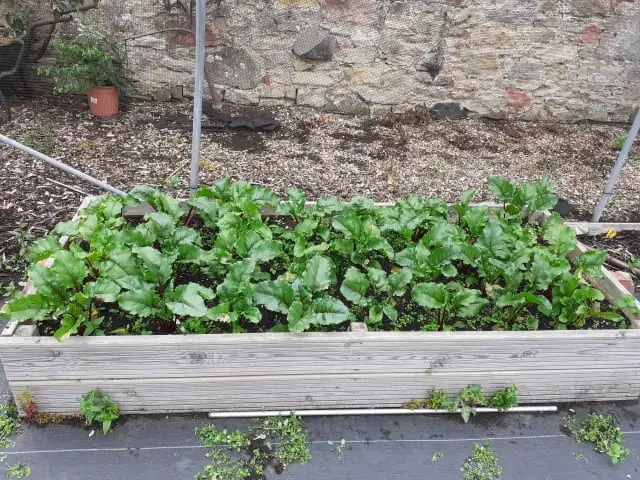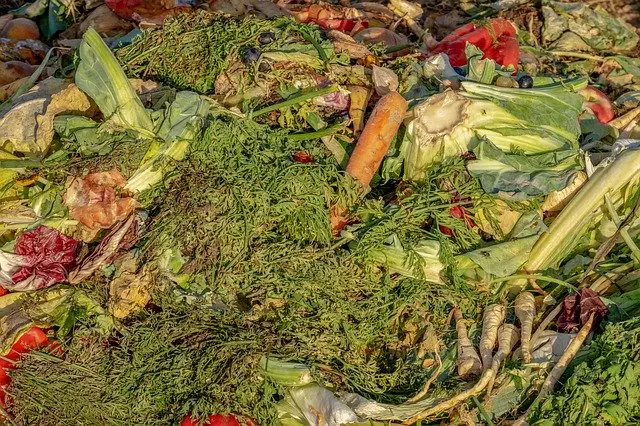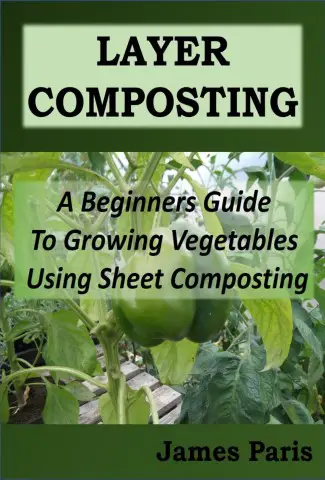There are many ways to go about building or working A Raised Bed garden, and indeed you can raise a vegetable garden bed without building a structure to hold it all together – although that is the favoured way in general.
When speaking about Raised Bed gardening practices, it usually refers to a growing area that is either raised up from the ground level on legs or supports.
Or it is a wooden (usually) bottomless box frame that is built from 6 inches to 3-foot-high in some cases.

There is another way to raise a garden bed however, especially a vegetable bed, that does not require a framework or a raised box on legs.
This raised bed is simply built on the ground and built up by layering materials together that will form a nutrient rich growing environment for the vegetables.
Layering a vegetable bed is a simple 4-step process that involves building up the materials in the following order.
- Choose the location of your bed. It may be that you are using an existing vegetable plot to build up, that’s ok. If not then just be sure to choose an area that has no overhanging trees, and gets at least 6 hours of sunshine per day.
- Gather your materials together: You will need materials to cover an area 4 foot wide by 10 foot long. For this you will need enough cardboard or newspaper to cover the chosen bed area. On top of this you will need compost, manure (chicken or horse is good) straw, leaf moult (if in season!) grass clippings, kitchen vegetable waste.
- Mark off the area: Once your area is chosen you can start by laying down the cardboard – even direct on grass – At this point you may even lay down a raised bed frame to contain the bed if you wish. This will make it easier to manage in the long run.
- Add the rest of the materials in the following order. First a thick layer of straw, followed by a mix of manure and compost. Another thin layer of straw and leaf moult if you have any, followed by a thick layer of ‘green’ material like grass clippings, kitchen veggie waste. Cover this with 3-4 inches of soil/compost mix.
This is a general process which can be adapted to suit your own particular circumstances and material availability.
Basically what you are trying to achieve is to produce the perfect environment where compost will be formed by the layering process of green and brown materials.
This in turn creates the best conditions for growing nitrogen hungry vegetables!

The cardboard, straw, and leaf moult – even wood chippings are the materials that will add bulk and carbon to the compost. The grass clippings, vegetable waste and other green material you have at hand like stinging nettles or weeds (without seeds or roots) all add to the Nitrogen, Potassium, and phospherous that will feed your veggies.
How wide should a layered bed be?
As mentioned earlier, the bed itself is best kept to around 4 foot wide and as long as you like really but usually for practical reasons about ten foot long.
The reason for these sizes, especially the width, is that you want to make a manageable growing area that you do not have to stand upon in order to maintain the area or harvest your crops.
The goal is that you should be able to reach the center of the bed from both sides without over-stretching, or putting one foot into the bed to balance yourself!
For any no-dig garden technique this is an absolute must. If you have to step on the raised area then you will simply compress down the material and your no-dig garden becomes a ‘hard-dig’ garden and you are back to the heavy tools.
How deep should a layered bed be
For a good layered bed you would be planning for the end result to be at least 10-12 inches deep when you have finished adding the materials, but 12-14 inches would be better overall.
The reason for this is that the material will settle down over the coming months quite considerably as they all begin to decompose and start the composting process.
Is a layered bed the same as a lasagna garden
There is virtually no difference between the 2 concepts, although the lasagna garden possibly has the layers better defined with more layers divided with cardboard or newspapers.
Both ideas can be incorporated into a framework so that you have a definitive Layered Raised Bed lasagna garden!
Instead of filling a deep raised bed in the conventional way, you would fill it up in layers as described above.
To be fair, a lot of the time the decision over fill materials is made for the gardener as they seek to take advantage of the materials freely available to them in their surroundings.
If the correct mix is all around in the form of grass clippings, leaf moult, old straw bales etc, then why purchase expensive compost when you can in effect make your own.
Layering a garden is an excellent way to get a new life out of the cast away kitchen vegetable scraps, and of course the grass clippings from the lawn. If you have a large yard to clear up in the fall – finally the abundance of fallen leaves can be put to good use!


